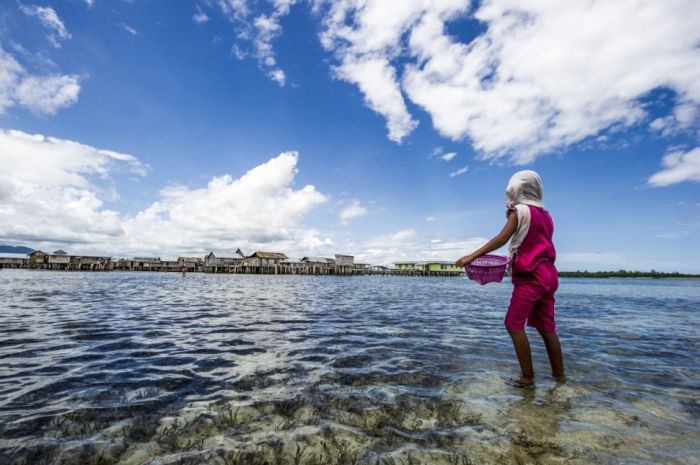Life In Philippines
|
Geography
The Philippines is an archipelago of 7,107 islands with a total land area, including inland bodies of water, of approximately 300,000 square kilometers (116,000 square miles). Its 36,289 kilometers (22,549 miles) of coastline makes it the country with the 5th longest coastline in the world. It is located between 116° 40', and 126° 34' E. longitude and 4° 40' and 21° 10' N. latitude and borders the Philippine Sea on the east, the South China Sea on the west, and the Celebes Sea on the south. The island of Borneo is located a few hundred kilometers southwest and Taiwan is located directly to the north. The Moluccas and Sulawesi are located to the south-southwest and Palau is located to the east of the islands.
Most of the mountainous islands are covered in tropical rainforest and volcanic in origin. The highest mountain is Mount Apo. It measures up to 2,954 meters (9,692 feet) above sea level and is located on the island of Mindanao. The Galathea Depth in the Philippine Trench is the deepest point in the country and the third deepest in the world. The trench is located in the Philippine Sea. The longest river is the Cagayan River in northern Luzon. Manila Bay, upon the shore of which the capital city of Manila lies, is connected to Laguna de Bay, the largest lake in the Philippines, by the Pasig River. Subic Bay, the Davao Gulf, and the Moro Gulf are other important bays. The San Juanico Strait separates the islands of Samar and Leyte but it is traversed by the San Juanico Bridge.
Situated on the western fringes of the Pacific Ring of Fire, the Philippines experiences frequent seismic and volcanic activity. The Benham Plateau to the east in the Philippine Sea is an undersea region active in tectonic subduction. Around 20 earthquakes are registered daily, though most are too weak to be felt. The last major earthquake was the 1990 Luzon earthquake. There are many active volcanoes such as the Mayon Volcano, Mount Pinatubo, and Taal Volcano. The eruption of Mount Pinatubo in June 1991 produced the second largest terrestrial eruption of the 20th century. Not all notable geographic features are so violent or destructive. A more serene legacy of the geological disturbances is the Puerto Princesa Subterranean River. The white sand beaches that make Boracay a popular vacation getaway are made of coral remnants.
|
|















